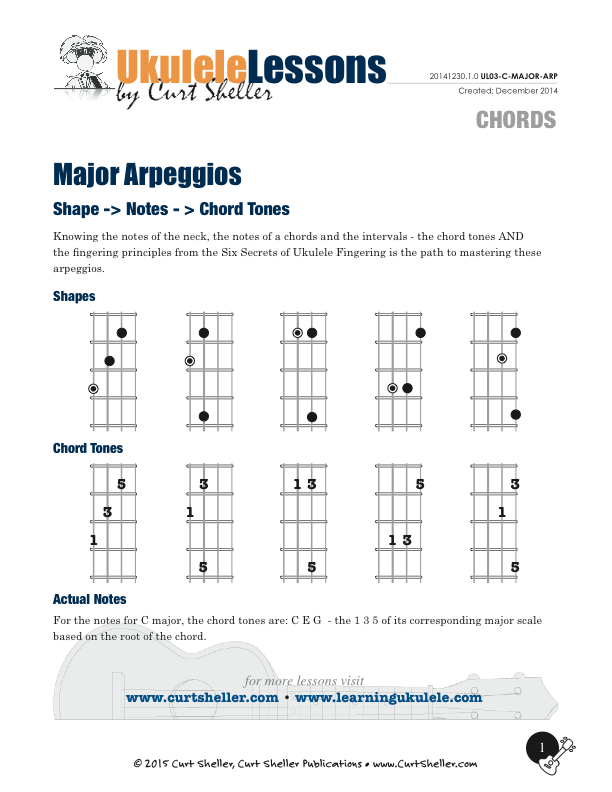

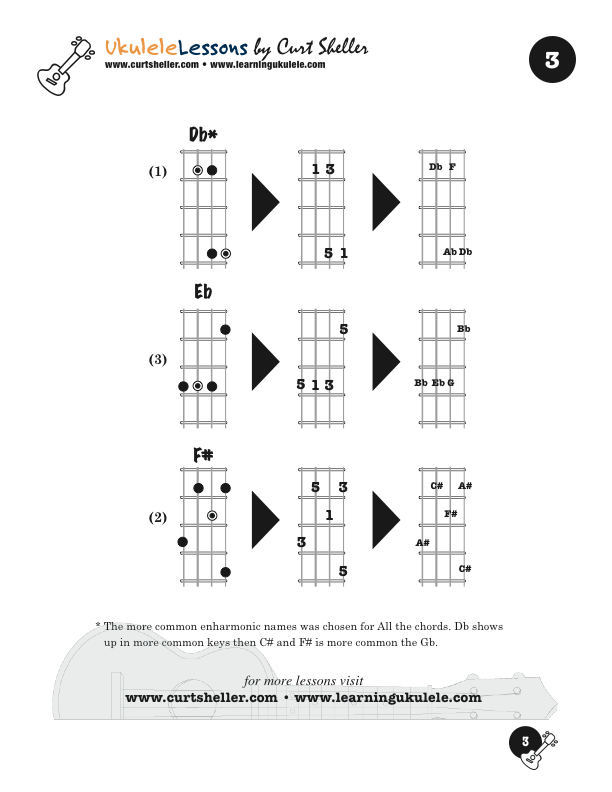
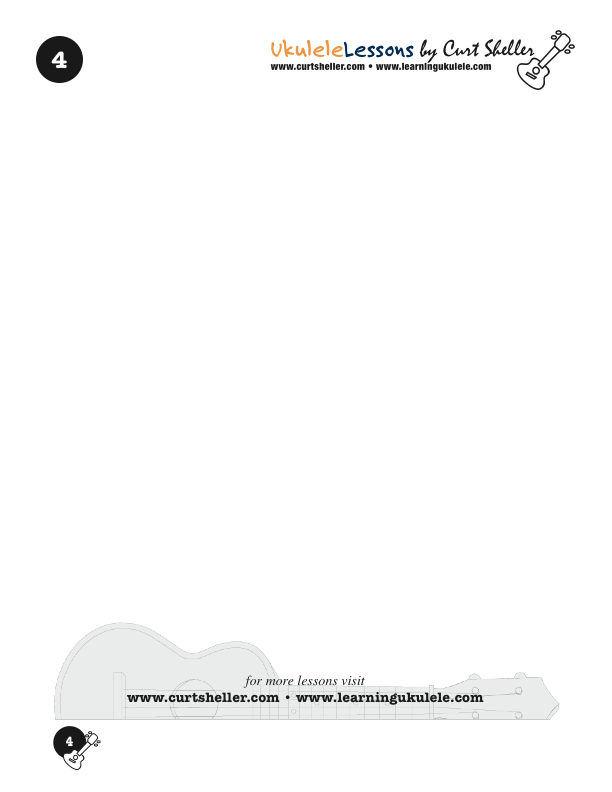




Five major arpeggio positions on the ukulele.
Available for Premium Site Access Plans Only
Sorry, can't give it ALL away!
This content requires a Premium / Gold Access Plan or enrolled in the Study with Curt - On-line or Private Lesson Program.
To view additional content for this page you'll need to either Sign In or Register or Upgrade to a Premium Site Access Plan .
Getting Beyond the Shapes
The goal is to get to the notes (names and intervals). And, how they sound, related to the context that you're using them in.
When it comes to chords, it's important to understand the notes they consist of and their intervals. Each chord is made up of a combination of specific notes, and the intervals between these notes determine the chord's quality and character. By learning the names and intervals of the notes in a chord, you can understand its structure and how it functions within a particular musical context.
For example, let's consider the C major chord. The basic shape of this chord on the ukulele is often played as the open C chord (0 0 0 3), which consists of the notes C , E , and G . These notes create a specific sound and harmonic function. However, there are numerous ways to voice this chord across the ukulele neck, using different fingerings and positions. Exploring these different voicings allows you to access different notes and intervals while still representing the C major chord, its sound and function.
Getting beyond the basic shapes is as simple as experimenting with inversions, extensions, and alterations. Inversions involve changing the order of the notes within a chord, while extensions add extra notes to the basic triad. Alterations modify the quality of certain chord tones, such as adding a sharp or flat to a particular note. This lesson coves the bas three notes and intervals of a major triad.
Understanding the relationship between chords and melodies is also crucial. Chords provide the harmonic framework, while melodies consist of individual notes that create a melodic line. By incorporating chord tones and extensions into your melodies, you can create more nuanced and interesting musical phrases.
Five major arpeggio positions on the ukulele.
Available for Premium Site Access Plans Only
Sorry, can't give it ALL away!
This content requires a Premium / Gold Access Plan or enrolled in the Study with Curt - On-line or Private Lesson Program.
To view additional content for this page you'll need to either Sign In or Register or Upgrade to a Premium Site Access Plan .
Getting Beyond the Shapes
The goal is to get to the notes (names and intervals). And, how they sound, related to the context that you're using them in.
When it comes to chords, it's important to understand the notes they consist of and their intervals. Each chord is made up of a combination of specific notes, and the intervals between these notes determine the chord's quality and character. By learning the names and intervals of the notes in a chord, you can understand its structure and how it functions within a particular musical context.
For example, let's consider the C major chord. The basic shape of this chord on the ukulele is often played as the open C chord (0 0 0 3), which consists of the notes C , E , and G . These notes create a specific sound and harmonic function. However, there are numerous ways to voice this chord across the ukulele neck, using different fingerings and positions. Exploring these different voicings allows you to access different notes and intervals while still representing the C major chord, its sound and function.
Getting beyond the basic shapes is as simple as experimenting with inversions, extensions, and alterations. Inversions involve changing the order of the notes within a chord, while extensions add extra notes to the basic triad. Alterations modify the quality of certain chord tones, such as adding a sharp or flat to a particular note. This lesson coves the bas three notes and intervals of a major triad.
Understanding the relationship between chords and melodies is also crucial. Chords provide the harmonic framework, while melodies consist of individual notes that create a melodic line. By incorporating chord tones and extensions into your melodies, you can create more nuanced and interesting musical phrases.
Major Arpeggios in Five Positions
Practice, Explore
In terms of practice, it's helpful to study music theory, specifically chord construction and harmonization. This knowledge will enable you to analyze and understand the notes and intervals in any given chord. Additionally, experimenting with different voicings, chord progressions, and melodic ideas will expand your musical vocabulary and allow you to express yourself more creatively.
Consider this just to be you do with learning another chord voicing of a chord that you already know. This is the same — these are just more chords. Which by chance can be used for more than simple strumming a chord to creating melodies — either pre-composed or improvised.
Remember that music is a language, and just as you can create various sentences and phrases with words, you can do the same with chords and melodies. Continuously exploring and experimenting with chords, their notes, intervals, and sounds will provide you with a deeper understanding of music and help you develop your unique musical voice.
Related Lessons, Videos, Lesson Series, Songs, Books & Reference Charts, Resources & Assets, Workshops are below.

"QuickStart Scale and Arpeggio Fingerings" are a highly organized, efficient system of scale and arpeggio fingerings. Each fingering pattern is shown with a fingerboard shape, TAB and standard music notation. Related chords are also explained for each scale. Master these fingerings and unlock your potential for solos and improvisation.
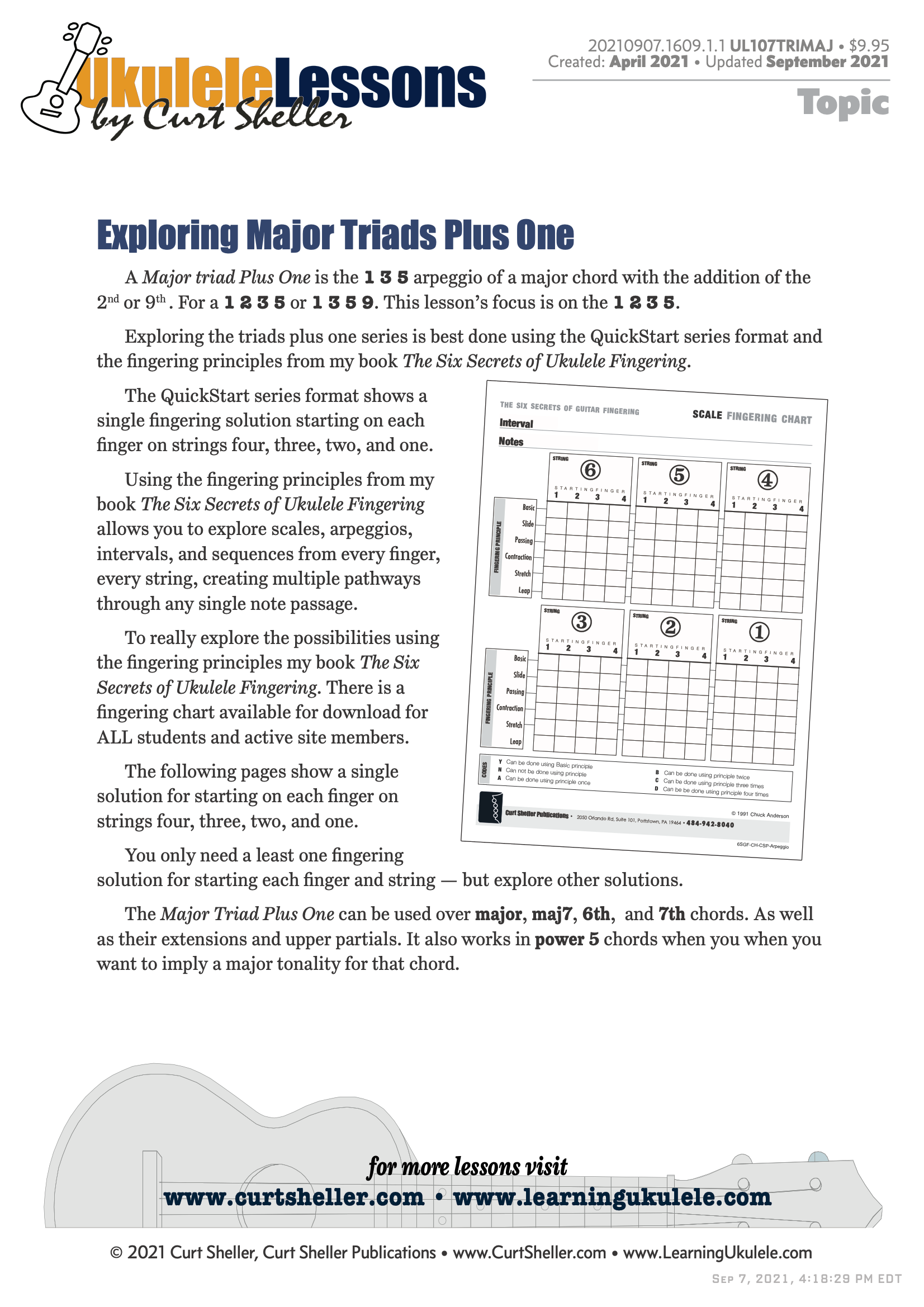
Exploring the triads plus one series is best done using the QuickStart series format and the fingering principles from my book The Six Secrets of Ukulele Fingering. The QuickStart series format single fingering solution for starting on each finger on strings four, three, two and one. Using the fingering principles from my book The Six Secrets of Ukulele Fingering allows you to explore scales, arpeggios, intervals and sequences from every finger-every strings, creating multiple pathways through any single note passage.
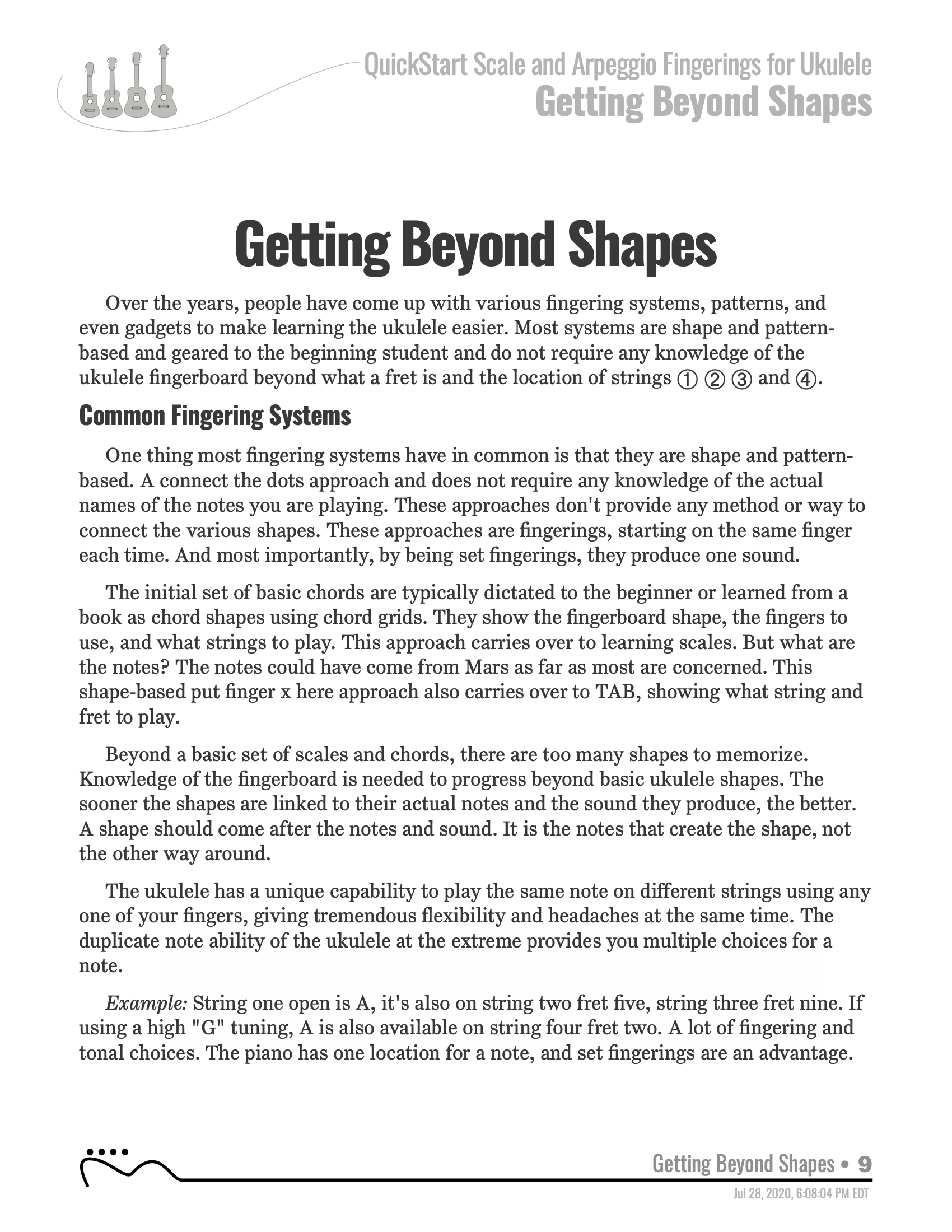
Over the years, people have come up with various fingering systems, patterns, and even gadgets to make learning the ukulele easier. Most systems are shape and pattern based and geared to the beginning student and do not require any knowledge of the ukulele fingerboard beyond what a fret is and the location of strings.

QuickStart Scale and Arpeggio Fingering Series are a concise, well-organized series of books and lessons ideal for any ukulele, guitar or fretted string player beginning to explore scales and arpeggios. Unlike so many other instruction books on the market, QuickStart Scale and Arpeggio Fingering Series keeps a sharp focus on the six critical scales, their fingerings and their related chords. All material is covered in every key.
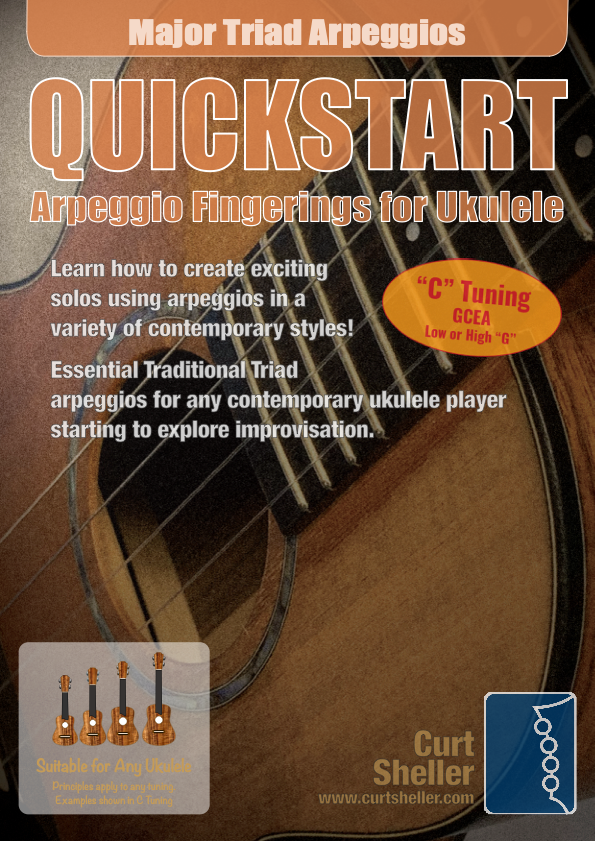
There are four traditional triads: Major, Minor, Diminished and Augmented. Based on a major scale a Major triad contains the following intervals: Root (1), 3, . A one octave fingering solution is presented for each finger starting on strings ➃, ➂ and ➁.

Learn the six fingering principles to navigating the ukulele fingerboard. Fingering is one of the most universal topics. Whether your style is Rock, Blues, Country, Jazz or Classical, these principles will improve your technique, your solos, even your sight reading. Think of fingering as a series of pathways. When you learn to connect these pathways, there are benefits not only to technique but also to creativity.

Finally, learn the names of the notes of the ukulele fingerboard in C tuning .

Learn the six fingering principles to navigating the ukulele fingerboard. Fingering is one of the most universal topics. Book: Six Secrets of the Ukulele Fingering

Harmonic Analysis is the understanding of the functional sequence of chords. It is the process used to analyze the harmonic structure of a progression, song or composition. Book: Harmonic Analysis for Scale Selection and Chord Substitution

Learn to read single note melodies in the first/open position is a lot easier than you might think. Book: Ukulele – Reading Music Series – Primer

An organized collection of daily practice and reference material for the contemporary ukulele player for developing the vocabulary and knowledge necessary for single note playing. Book: Daily Practice Material for the Contemporary Ukulele
Checkout the Books & Reference Charts for additional Handy, Dandy Reference Charts.

Ukulele Fingerboard Chart for C Tuning, Low or High G – G C E A

Ukulele Fingerboard Chart for G Tuning, Low or High A – D G B E

A handy reference chart of all 15 major and relative minor key signatures. US Letter 8.5 x 11 sized (ANSI-A), A4
Checkout the Books & Reference Charts for additional Handy, Dandy Reference Charts.




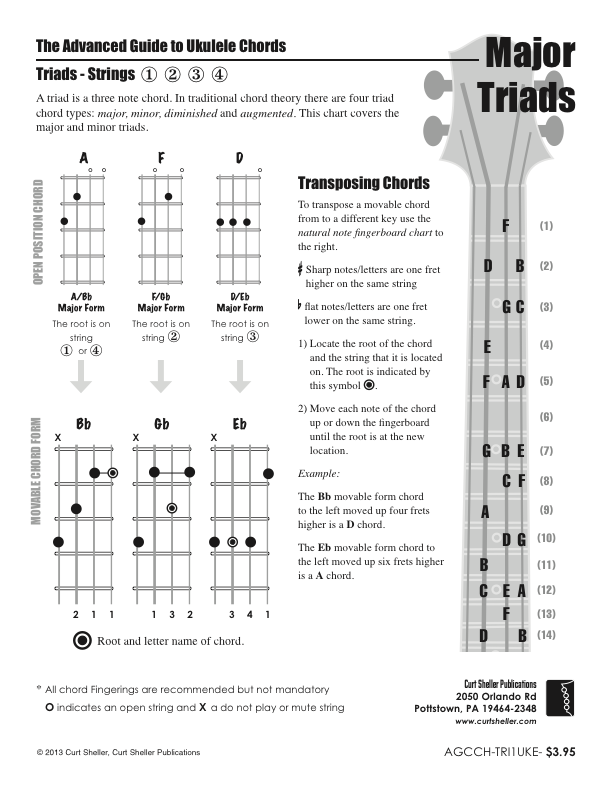
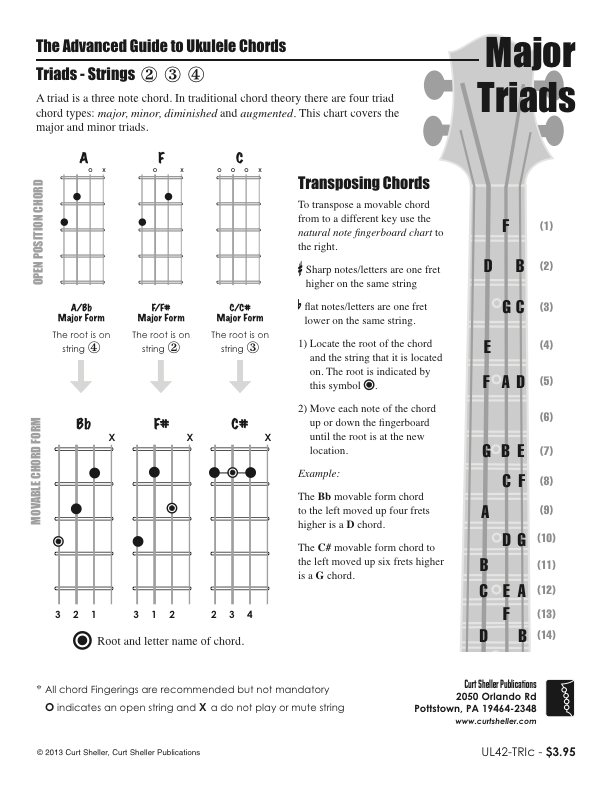
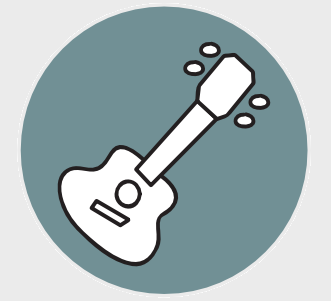

.jpg)